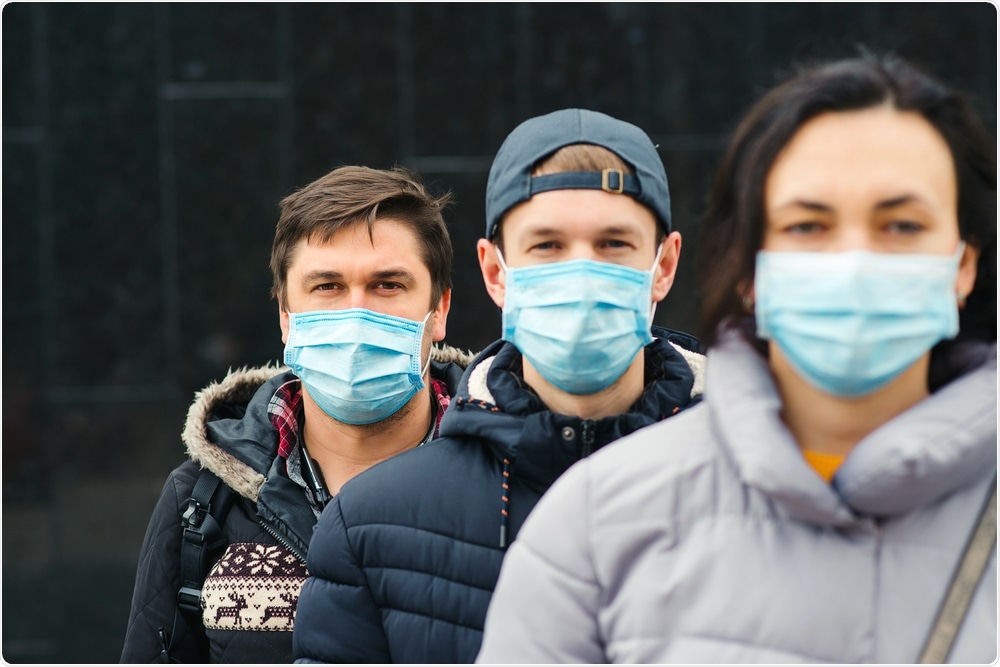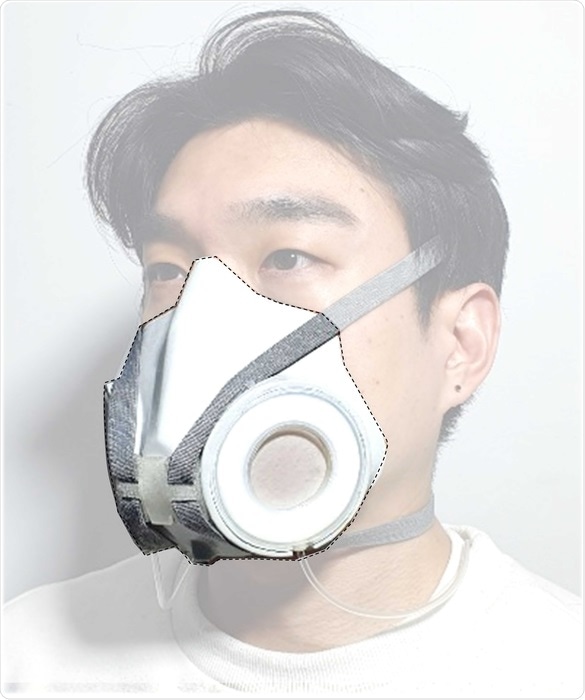In this interview, News-Medical speaks to Professor Seung Hwan Ko about his latest research in which he developed a face mask that can adapt to your changing conditions and environment.
People are becoming accustomed to wearing face masks daily due to the ongoing COVID-19 pandemic. What inspired your research into face masks and how they can be adapted for better use?
Most of the face masks invented so far have not paid attention to the dynamic change of the users’ condition and environment. Instead, most face masks have just focused on increasing the filtering efficiency. However, even though the mask itself has a very high filtration efficiency, it does not mean it is user-friendly (usually, a high-efficiency filter means the mask is hard to breathe and uncomfortable).
At certain conditions, other components are more important than filtration efficiency. For example, last year, I read news articles saying that several students died during a physical education class while wearing a mask. This may imply that one single type of filter mask cannot react properly to the dynamically changing condition of the user and the user should therefore carry various types of face mask and change them depending on their physical demand or environment change.
We tried to invent an AI-driven face mask that detects the user’s condition (predict the short-term respiration rate change with the aid of AI) or detects the environmental air quality change and automatically changes the pore size, changing the trade-off between the comfortability and filtering efficiency.

Image Credit: Volurol/Shutterstock.com
The main purpose of face masks is to filter out harmful pollutants. How do face masks do this?
Most of the off-the-shelf face masks adopt fabric air filters in which very thin (about 10 – 100 times thinner than a human hair) fibers entangle each other to form a loosely packed sponge-like porous structure. As an airstream goes through the complex, intertwined network of tiny air tunnels, the small airborne particles, which we call pollutants, collide with the fibers and adhere to them. This is how the face masks do the filtration.
Our invention also shares the same working mechanism in terms of the filtration of the pollutants, yet differs greatly in that it allows for dynamic tuning of how the mechanism actually works.
Can you describe how face masks are often designed and developed?
Until two years ago, it is true that there was not much interest in face masks because masks were just a sanitary product that was located on the outskirts of our ordinary lives. However, the global COVID-19 pandemic changed the situation.
Through the last year and even today, countless reports on developing new, advanced forms of face masks are being made, while the majority of those still rely on conventional, passive air filtration technology. To the best of our knowledge, our invention is the first-ever reported development of a ‘dynamically tunable face mask’.
Many people find face masks uncomfortable, particularly when exercising. Why is this?
When people wear a mask, they find the masks uncomfortable, especially when exercising, because the body needs more oxygen and breathing rate increases. However, a mask usually induces the pressure drop (or pressure difference) due to the presence of the filter.
The pressure drop (or pressure difference) increases more for the higher efficiency filter. The higher pressure drop (or pressure difference) makes it hard for the user to breathe and consumes more energy (thus makes the user uncomfortable).
Can you describe how you carried out your latest research into designing a face mask that adapts to changing conditions?
Our team is a cooperative coalescence of experts from various fields of engineering, ranging from material science, mechanical, electrical engineering, and even machine intelligence. That’s how we’ve been able to develop an operable AI-driven face mask starting from scratch.
Our team started by conceiving an archetype idea that was a little bit vague to see the first time. However, the well-trained engineering minds from various facets made it possible to materialize the idea into a tangible, convincing entity. In that sense, we would say, there has been collaborative multidisciplinary engineering behind the successful execution of our work.

Image Credit: Adapted from ACS Nano 2021, DOI: 10.1021/acsnano.1c06204
How did you develop your dynamic respirator? How does this air filter work in different conditions?
One of the striking features of our dynamic respirator is that it can automatically transform its filtration characteristics to fit the given circumstance. This means the system is designed to be capable of ‘sensing’ the environment associated with its operation.
Thus, we endowed the sensing ability to the system by incorporating sensors. A PM (particulate matter) sensor is used to measure how much of the ambient air is polluted and the barometers are used for sensing the wearer’s respiratory pattern reflecting the physical condition. The information gathered from the sensors is then used to make comprehensive ‘situational awareness’ of the AI algorithm which then generates the dynamic adjustment of filtration characteristics to the different scenarios.
What benefits will this face mask have for people compared to other face masks available?
The traditional mask usually has the basic concept that users need to adapt themselves to the mask (this means that users need to bear the uncomfortable situation). However, we tried to invent a new concept in which the mask adapts itself to the user’s condition and external environment.
I think our AI-driven mask is the first demonstration to consider the dynamic change of user’s demand and environmental conditions, and it changes the current focus in masks from filters to people (users) for the first time.
What role did artificial intelligence (AI) play in your research?
What we’ve been trying to build through this work was an automated respirator that can seamlessly adapt to an individual wearer, necessitating a highly personalized operational algorithm; the respirator and algorithm running will, in a figurative sense, recognize ‘characteristic’ transitions of respiratory patterns of a specific user.
However, the characteristic of how the transition occurs, for example, differs among individuals. This makes developing a universal algorithm that can be released to the public extremely challenging. In this context, we choose to develop an AI algorithm that learns the respiratory characteristics of individual wearers to enable ‘universal personalization’, which is not possible with ordinary, inflexible algorithms.
Do you believe that if adaptable face masks were readily available more people would wear them regularly, potentially reducing the spread of COVID-19?
The major motivation for the AI-driven mask came from my personal experience. When I go to the gym or go out jogging, I feel a strong urge to take off the mask during exercise. I could also see many people putting the mask away while using the running machine. During the COVID-19 situation, many places (indoor or outdoor) have a strict restriction policy for wearing a mask.
The major reason why they don’t wear the mask is simply that they can be very uncomfortable breathing while wearing it. AI-driven masks automatically adjust the trade-off between the filtering efficiency and comfortability to satisfy the users’ dynamic condition and enviornment change. The adaptable face masks are expected to help more people wear masks regularly and potentially reduce the spread of COVID-19.

Image Credit: Drazen Zigic/Shutterstock.com
What further research needs to be carried out before these personalized facemasks can be readily available?
Miniaturization of the mask and to shed light on the use of the face mask in the market. Technological advancements often tend to hide the technology itself from our sight. Light enough, small enough, and therefore oblivious technologies, can offer pure utility on their own without distracting the user. This philosophy is leading our team to discover further various engineering options to minimize the entire system and improve the user experience.
What are the next steps in your research?
Together with the miniaturization, we are trying to discover various elastic materials to endow next-level functionality to the stretchable air filter, one key part of our system. For example, we may make an air filter that can generate even a small amount of electricity as a result of the mechanical modulation of the air filter.
Or, we may focus on self-healable materials to enhance the long-term usability and mechanical stability of the stretchable air filter. Most of all, we are expecting active cooperation with medical experts from every corner of the globe to transfer our technology to the industry.
Where can readers find more information?
More detailed information on the AI-driven smart face mask can be found in the recent publication
“Dynamic Pore Modulation of Stretchable Air Filter for Machined Learned Adaptive Respiratory Protection”, ACS Nano, in press, 2021. [doi/10.1021/acsnano.1c06204]
A further related study from our group on the transparent and reusable filter can be found in our previous publication “High Efficiency, Transparent, Reusable and Active PM2.5 Filters by Hierarchical Ag Nanowire Percolation Network”, Nano Letters, 17, 4339-4346, 2017. [doi/10.1021/acs.nanolett.7b01404]
About Professor Seung Hwan Ko
Seung Hwan Ko is a professor in Applied Nano & Thermal Science (ANTS) Lab, Mechanical Engineering department., Seoul National University, Korea. Before joining Seoul National University, he had been a faculty at KAIST, Korea since 2009. He received his Ph.D. degree in mechanical engineering from UC Berkeley in 2006.
He worked as a postdoc at UC Berkeley until 2009. His current research interests are functional filters (variable pore filter, transparent filter, reusable filter, stretchable filter, antibacterial filter), wearable electronics, stretchable/flexible electronics, VR/AR technologies.